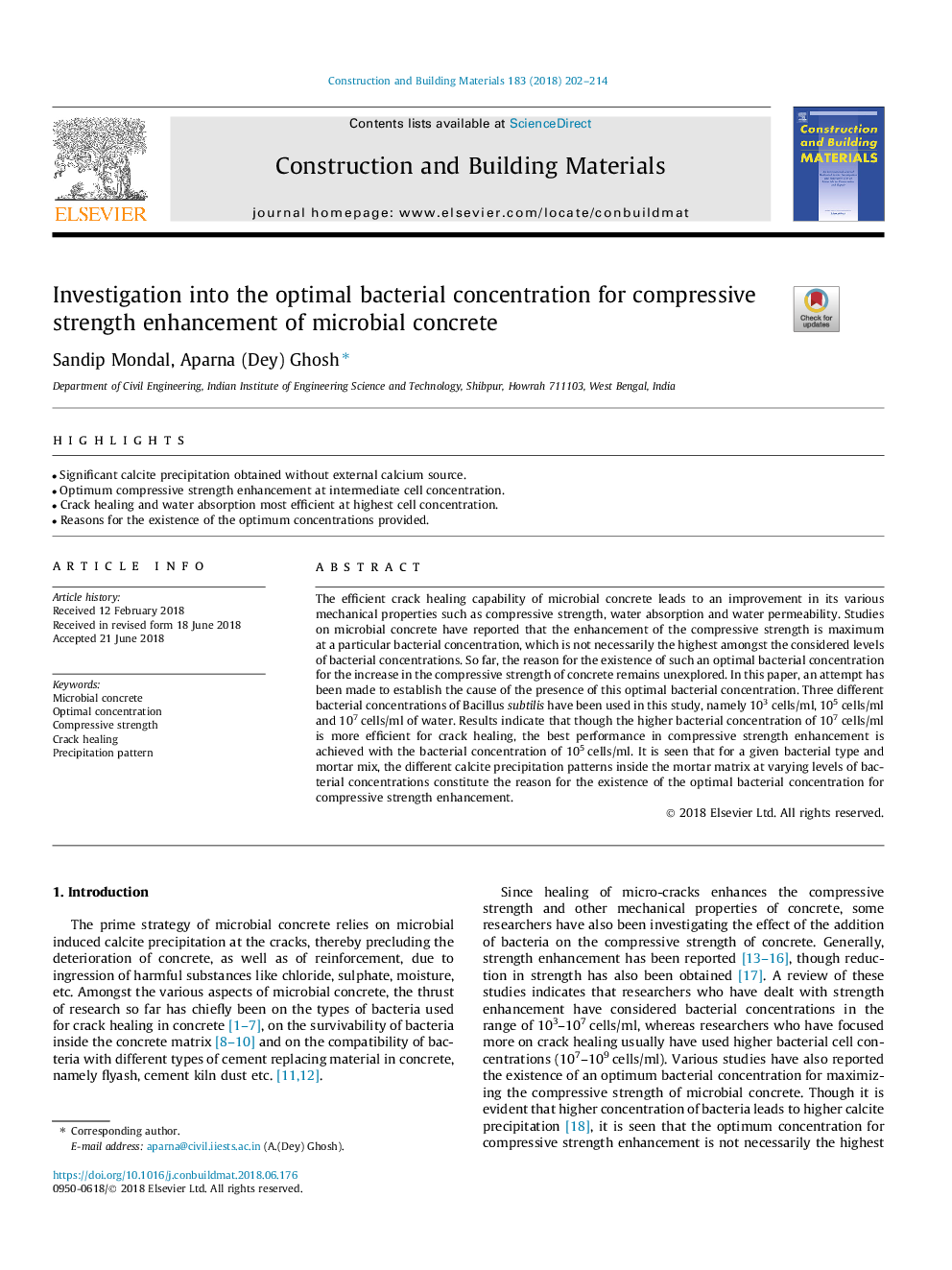| Article ID | Journal | Published Year | Pages | File Type |
|---|---|---|---|---|
| 6712096 | Construction and Building Materials | 2018 | 13 Pages |
Abstract
The efficient crack healing capability of microbial concrete leads to an improvement in its various mechanical properties such as compressive strength, water absorption and water permeability. Studies on microbial concrete have reported that the enhancement of the compressive strength is maximum at a particular bacterial concentration, which is not necessarily the highest amongst the considered levels of bacterial concentrations. So far, the reason for the existence of such an optimal bacterial concentration for the increase in the compressive strength of concrete remains unexplored. In this paper, an attempt has been made to establish the cause of the presence of this optimal bacterial concentration. Three different bacterial concentrations of Bacillus subtilis have been used in this study, namely 103â¯cells/ml, 105â¯cells/ml and 107â¯cells/ml of water. Results indicate that though the higher bacterial concentration of 107â¯cells/ml is more efficient for crack healing, the best performance in compressive strength enhancement is achieved with the bacterial concentration of 105â¯cells/ml. It is seen that for a given bacterial type and mortar mix, the different calcite precipitation patterns inside the mortar matrix at varying levels of bacterial concentrations constitute the reason for the existence of the optimal bacterial concentration for compressive strength enhancement.
Related Topics
Physical Sciences and Engineering
Engineering
Civil and Structural Engineering
Authors
Sandip Mondal, Aparna (Dey) Ghosh,
